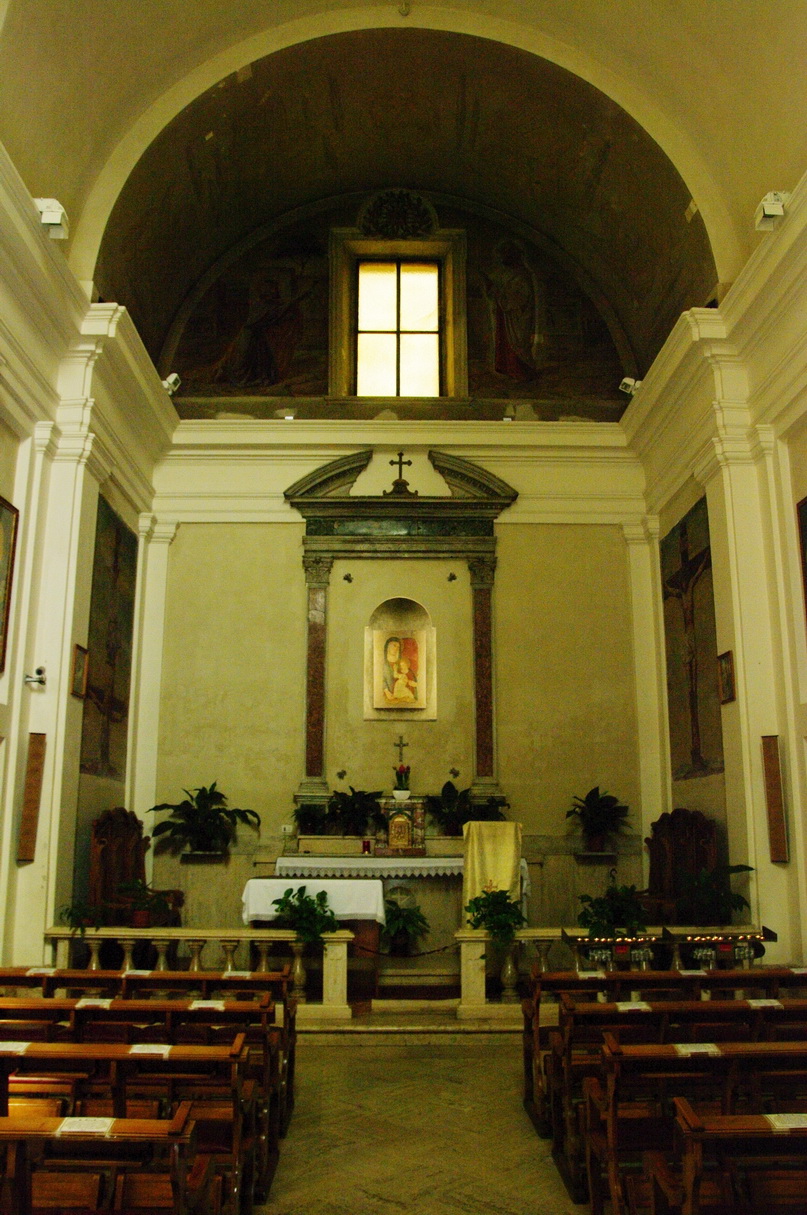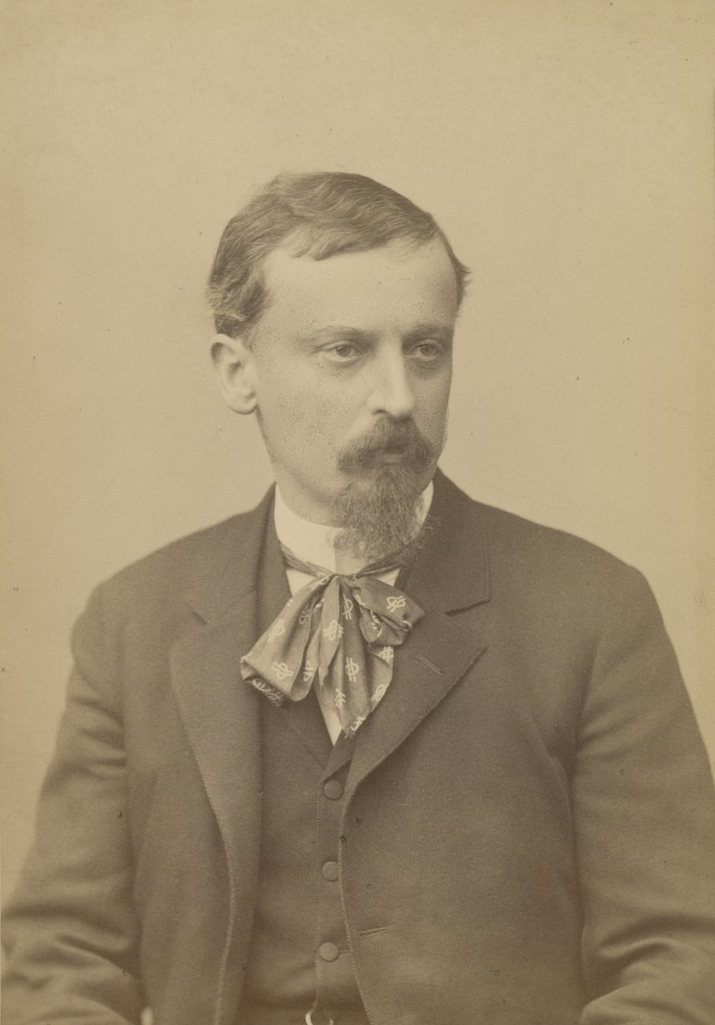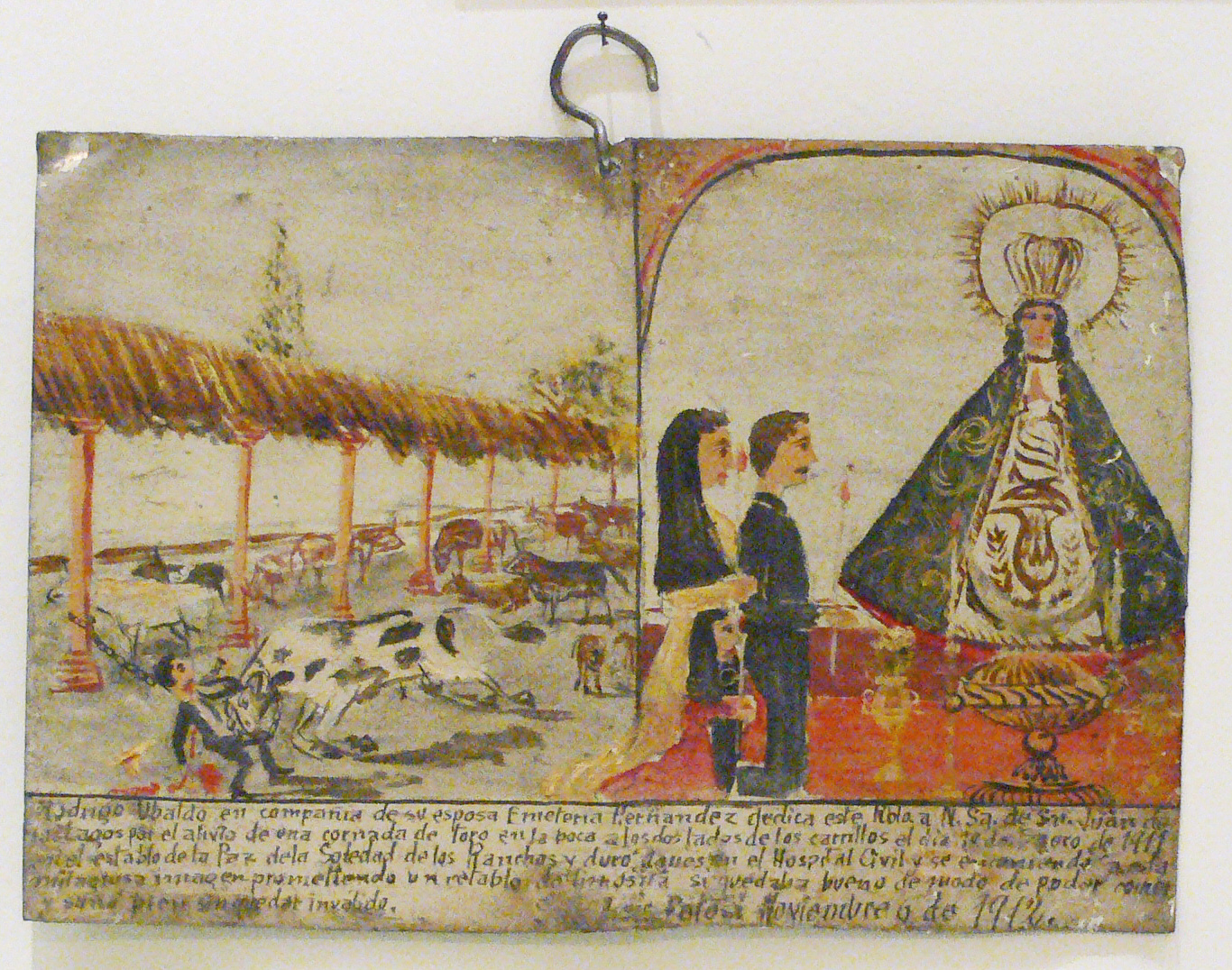|
Church Of Domine Quo Vadis
Santa Maria in Palmis ( it, Chiesa di Santa Maria delle Piante; la, Sanctae Mariae in Palmis), also known as Chiesa del Domine Quo Vadis, is a small church southeast of Rome. It is located about some 800 m from Porta San Sebastiano, where the Via Ardeatina branches off the Appian Way, on the site where, according to the apocryphal ''Acts of Peter'', Saint Peter met the risen Christ while Petrus was fleeing persecution in Rome. According to the tradition, Peter asked him, "Lord, where are you going?" ( la, Domine, quo vadis?). Christ answered, "I am going to Rome to be crucified again" ( la, Eo Romam iterum crucifigi). History There has been a sanctuary on the spot since the ninth century, but the current church is from 1637. The current façade was added in the 17th century. It has been supposed that the sanctuary might have been even more ancient, perhaps a Christian adaptation of some already existing temple: the church is in fact located just in front of the sacred ... [...More Info...] [...Related Items...] OR: [Wikipedia] [Google] [Baidu] |
Via Appia Antica
The Appian Way (Latin and Italian: ''Via Appia'') is one of the earliest and strategically most important Roman roads of the ancient republic. It connected Rome to Brindisi, in southeast Italy. Its importance is indicated by its common name, recorded by Statius, of ("the Appian Way, the queen of the long roads"). The road is named after Appius Claudius Caecus, the Roman censor who began and completed the first section as a military road to the south in 312 BC"Appian Way" in ''Chambers's Encyclopædia''. London: George Newnes, 1961, Vol. 1, p. 490. during the Samnite Wars. Origins The need for roads The Appian Way was a Roman road used as a main route for military supplies for its conquest of southern Italy in 312 BC and for improvements in communication. The Appian Way was the first long road built specifically to transport troops outside the smaller region of greater Rome (this was essential to the Romans). The few roads outside the early city were Etruscan and went ... [...More Info...] [...Related Items...] OR: [Wikipedia] [Google] [Baidu] |
Greece
Greece,, or , romanized: ', officially the Hellenic Republic, is a country in Southeast Europe. It is situated on the southern tip of the Balkans, and is located at the crossroads of Europe, Asia, and Africa. Greece shares land borders with Albania to the northwest, North Macedonia and Bulgaria to the north, and Turkey to the northeast. The Aegean Sea lies to the east of the Geography of Greece, mainland, the Ionian Sea to the west, and the Sea of Crete and the Mediterranean Sea to the south. Greece has the longest coastline on the Mediterranean Basin, featuring List of islands of Greece, thousands of islands. The country consists of nine Geographic regions of Greece, traditional geographic regions, and has a population of approximately 10.4 million. Athens is the nation's capital and List of cities and towns in Greece, largest city, followed by Thessaloniki and Patras. Greece is considered the cradle of Western culture, Western civilization, being the birthplace of Athenian ... [...More Info...] [...Related Items...] OR: [Wikipedia] [Google] [Baidu] |
Quo Vadis
''Quō vādis?'' (, ) is a Latin phrase meaning "Where are you marching?". It is also commonly translated as "Where are you going?" or, poetically, "Whither goest thou?" The phrase originates from the Christian tradition regarding Saint Peter's first words to the risen Christ during their encounter along the Appian Way. According to the apocryphal Acts of Peter (Vercelli Acts XXXV; late 2nd century AD), as Peter flees from crucifixion in Rome at the hands of the government, and along the road outside the city, he meets the risen Jesus. In the Latin translation, Peter asks Jesus, "''Quō vādis?''" He replies, "''Rōmam eō iterum crucifīgī''" ("I am going to Rome to be crucified again"). Peter then gains the courage to continue his ministry and returns to the city, where he is martyred by being crucified upside-down. The Church of Domine Quo Vadis in Rome is built where the meeting between Peter and Jesus allegedly took place. The words "quo vadis" as a question also occ ... [...More Info...] [...Related Items...] OR: [Wikipedia] [Google] [Baidu] |
A Narrative Of The Time Of Nero
A, or a, is the first letter and the first vowel of the Latin alphabet, used in the modern English alphabet, the alphabets of other western European languages and others worldwide. Its name in English is ''a'' (pronounced ), plural ''aes''. It is similar in shape to the Ancient Greek letter alpha, from which it derives. The uppercase version consists of the two slanting sides of a triangle, crossed in the middle by a horizontal bar. The lowercase version can be written in two forms: the double-storey a and single-storey ɑ. The latter is commonly used in handwriting and fonts based on it, especially fonts intended to be read by children, and is also found in italic type. In English grammar, " a", and its variant " an", are indefinite articles. History The earliest certain ancestor of "A" is aleph (also written 'aleph), the first letter of the Phoenician alphabet, which consisted entirely of consonants (for that reason, it is also called an abjad to distinguis ... [...More Info...] [...Related Items...] OR: [Wikipedia] [Google] [Baidu] |
Henryk Sienkiewicz
Henryk Adam Aleksander Pius Sienkiewicz ( , ; 5 May 1846 – 15 November 1916), also known by the pseudonym Litwos (), was a Polish writer, novelist, journalist and Nobel Prize laureate. He is best remembered for his historical novels, especially for his internationally known best-seller ''Quo Vadis'' (1896). Born into an impoverished Polish noble family in Russian-ruled Congress Poland, in the late 1860s he began publishing journalistic and literary pieces. In the late 1870s he traveled to the United States, sending back travel essays that won him popularity with Polish readers. In the 1880s he began serializing novels that further increased his popularity. He soon became one of the most popular Polish writers of the turn of the 19th and 20th centuries, and numerous translations gained him international renown, culminating in his receipt of the 1905 Nobel Prize in Literature for his "outstanding merits as an epic writer." Many of his novels remain in print. In Poland he is ... [...More Info...] [...Related Items...] OR: [Wikipedia] [Google] [Baidu] |
Pope Gregory XVI
Pope Gregory XVI ( la, Gregorius XVI; it, Gregorio XVI; born Bartolomeo Alberto Cappellari; 18 September 1765 – 1 June 1846) was head of the Catholic Church and ruler of the Papal States from 2 February 1831 to his death in 1 June 1846. He had adopted the name Mauro upon entering the religious order of the Camaldolese. Strongly conservative and traditionalist, he opposed democratic and modernising reforms in the Papal States and throughout Europe, seeing them as fronts for revolutionary leftism. Against these trends, Gregory XVI sought to strengthen the religious and political authority of the papacy (see ultramontanism). In the encyclical ''Mirari vos'', he pronounced it "false and absurd, or rather mad, that we must secure and guarantee to each one liberty of conscience." He encouraged missionary activity abroad and condemned the slave trade. He is the most recent pope to take the pontifical name " Gregory", and the most recent pope who was not a bishop when elected. He ... [...More Info...] [...Related Items...] OR: [Wikipedia] [Google] [Baidu] |
Purgatory
Purgatory (, borrowed into English via Anglo-Norman and Old French) is, according to the belief of some Christian denominations (mostly Catholic), an intermediate state after physical death for expiatory purification. The process of purgatory is the final purification of the elect, which is entirely different from the punishment of the damned. Tradition, by reference to certain texts of scripture, sees the process as involving a cleansing fire. Some forms of Western Christianity, particularly within Protestantism, deny its existence. Other strands of Western Christianity see purgatory as a place, perhaps filled with fire. Some concepts of Gehenna in Judaism resemble those of purgatory. The word "purgatory" has come to refer to a wide range of historical and modern conceptions of postmortem suffering short of everlasting damnation. English-speakers also use the word in a non-specific sense to mean any place or condition of suffering or torment, especially one that is tempor ... [...More Info...] [...Related Items...] OR: [Wikipedia] [Google] [Baidu] |
Ex Voto
An ex-voto is a votive offering to a saint or to a divinity; the term is usually restricted to Christian examples. It is given in fulfillment of a vow (hence the Latin term, short for ''ex voto suscepto'', "from the vow made") or in gratitude or devotion. Definition Ex-votos are placed in a church or chapel where the worshiper seeks grace or wishes to give thanks. The destinations of pilgrimages often include shrines decorated with ex-votos. Ex-votos can take a wide variety of forms. They are not only intended for the helping figure, but also as a testimony to later visitors of the received help. As such they may include texts explaining a miracle attributed to the helper, or symbols such as a painted or modeled reproduction of a miraculously healed body part, or a directly related item such as a crutch given by a person formerly lame. There are places where a very old tradition of depositing ex-votos existed, such as Abydos in ancient Egypt. Ex-voto paintings Especially in th ... [...More Info...] [...Related Items...] OR: [Wikipedia] [Google] [Baidu] |
San Sebastiano Fuori Le Mura
San Sebastiano fuori le mura (Saint Sebastian beyond the Walls), or San Sebastiano ''ad Catacumbas'' (Saint Sebastian at the Catacombs), is a Minor basilica in Rome, Central Italy. Up to the Great Jubilee of 2000, San Sebastiano was one of the Seven Pilgrim Churches of Rome, and many pilgrims still favor the traditional list (not least perhaps because of the Catacombs, and because the Santuario della Madonna del Divino Amore, which replaced it in the list, is farther from the inner city). History Built originally in the first half of the 4th century, the basilica is dedicated to St. Sebastian, a popular Roman martyr of the 3rd century. The name ''ad catacumbas'' refers to the catacombs of St Sebastian, over which the church was built, while "fuori le mura" refers to the fact that the church is built outside the Aurelian Walls, and is used to differentiate the basilica from the church of San Sebastiano al Palatino on the Palatine Hill. According to the founding tradition, in 25 ... [...More Info...] [...Related Items...] OR: [Wikipedia] [Google] [Baidu] |
I Piedi Del Quo Vadis
I, or i, is the ninth letter and the third vowel letter of the Latin alphabet, used in the modern English alphabet, the alphabets of other western European languages and others worldwide. Its name in English is ''i'' (pronounced ), plural '' ies''. History In the Phoenician alphabet, the letter may have originated in a hieroglyph for an arm that represented a voiced pharyngeal fricative () in Egyptian, but was reassigned to (as in English "yes") by Semites, because their word for "arm" began with that sound. This letter could also be used to represent , the close front unrounded vowel, mainly in foreign words. The Greeks adopted a form of this Phoenician ''yodh'' as their letter ''iota'' () to represent , the same as in the Old Italic alphabet. In Latin (as in Modern Greek), it was also used to represent and this use persists in the languages that descended from Latin. The modern letter ' j' originated as a variation of 'i', and both were used interchangeably for ... [...More Info...] [...Related Items...] OR: [Wikipedia] [Google] [Baidu] |
Paul Of Tarsus
Paul; grc, Παῦλος, translit=Paulos; cop, ⲡⲁⲩⲗⲟⲥ; hbo, פאולוס השליח (previously called Saul of Tarsus;; ar, بولس الطرسوسي; grc, Σαῦλος Ταρσεύς, Saũlos Tarseús; tr, Tarsuslu Pavlus; la, Paulus Tarsensis AD), commonly known as Paul the Apostle and Saint Paul, was a Christian apostle who spread the teachings of Jesus in the first-century world. Generally regarded as one of the most important figures of the Apostolic Age, he founded several Christian communities in Asia Minor and Europe from the mid-40s to the mid-50s AD. According to the New Testament book Acts of the Apostles, Paul was a Pharisee. He participated in the persecution of early disciples of Jesus, possibly Hellenised diaspora Jews converted to Christianity, in the area of Jerusalem, prior to his conversion. Some time after having approved of the execution of Stephen, Paul was traveling on the road to Damascus so that he might find any Christians ... [...More Info...] [...Related Items...] OR: [Wikipedia] [Google] [Baidu] |
Pope Damasus I
Pope Damasus I (; c. 305 – 11 December 384) was the bishop of Rome from October 366 to his death. He presided over the Council of Rome of 382 that determined the canon or official list of sacred scripture. He spoke out against major heresies (including Apollinarianism and Macedonianism) and thus solidifying the faith of the Catholic Church, and encouraged production of the Vulgate Bible with his support for Jerome. He helped reconcile the relations between the Church of Rome and the Church of Antioch, and encouraged the veneration of martyrs. As well as various prose letters and other pieces Damasus was the author of Latin verse. Alan Cameron describes his epitaph for a young girl called Projecta (of great interest to scholars as the Projecta Casket in the British Museum may have been made for her) as "a tissue of tags and clichés shakily strung together and barely squeezed into the meter". Damasus has been described as "the first society Pope", and was possibly a member o ... [...More Info...] [...Related Items...] OR: [Wikipedia] [Google] [Baidu] |







.jpg)
